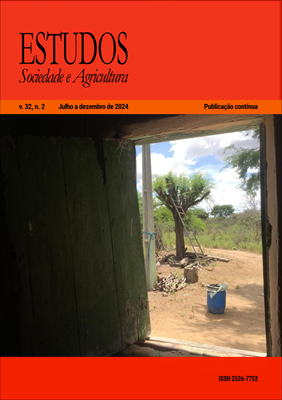Carbon estates and NFTs: the land rush and financialization of nature in the southern Amazon basin
DOI:
https://doi.org/10.36920/esa32-2_st09Keywords:
Financialization, Amazon, carbon credits, NFTAbstract
This text reflects on Amazonian development based on two ongoing situations involving forest financialization currently underway on rural properties in southern Amazonas (Lábrea, Pauini and Apuí). We examine compensation schemes for reducing emissions from clearing and degradation of forests (known locally as REDD+) and new conservation practices in a region where deforestation is advancing significantly. The first case involves an area in the process of demarcation as an Indigenous territory which was sold to a company that since 2021 has been selling non-fungible tokens (NTFs) backed by real local fauna and flora items as a type of virtual currency to protect Amazonia. The second case involves societies of farmers forming to certify thousands of hectares of preserved areas to sell carbon credits. Our goal is to point out the current dynamics of the land market for the agricultural frontier in southern Amazonia that are resulting from new possibilities for profit arising from the financialization of environmental protection in areas of the Amazon hit hard by deforestation.
Downloads
Downloads
Published
Issue
Section
License
Copyright (c) 2024 Thereza Cristina Cardoso Menezes

This work is licensed under a Creative Commons Attribution 4.0 International License.
Authors who publish in this journal agree to the following terms:
a) Authors maintain the copyright and grant the journal the right of first publication, with the work simultaneously licensed under the Creative Commons Attribution License which allows the sharing of the work with acknowledgment of authorship and initial publication in this journal.
b) Authors are authorized to take additional contracts separately, for non-exclusive distribution of the version of the work published in this journal (eg publish in institutional repository or as a book chapter), with acknowledgment of authorship and initial publication in this journal.
c) Authors are allowed and encouraged to publish and distribute their work online (eg in institutional repositories or on their personal page) at any point before or during the editorial process, as this can generate productive changes, as well as increase the impact and citation of published work (See The Effect of Free Access).






